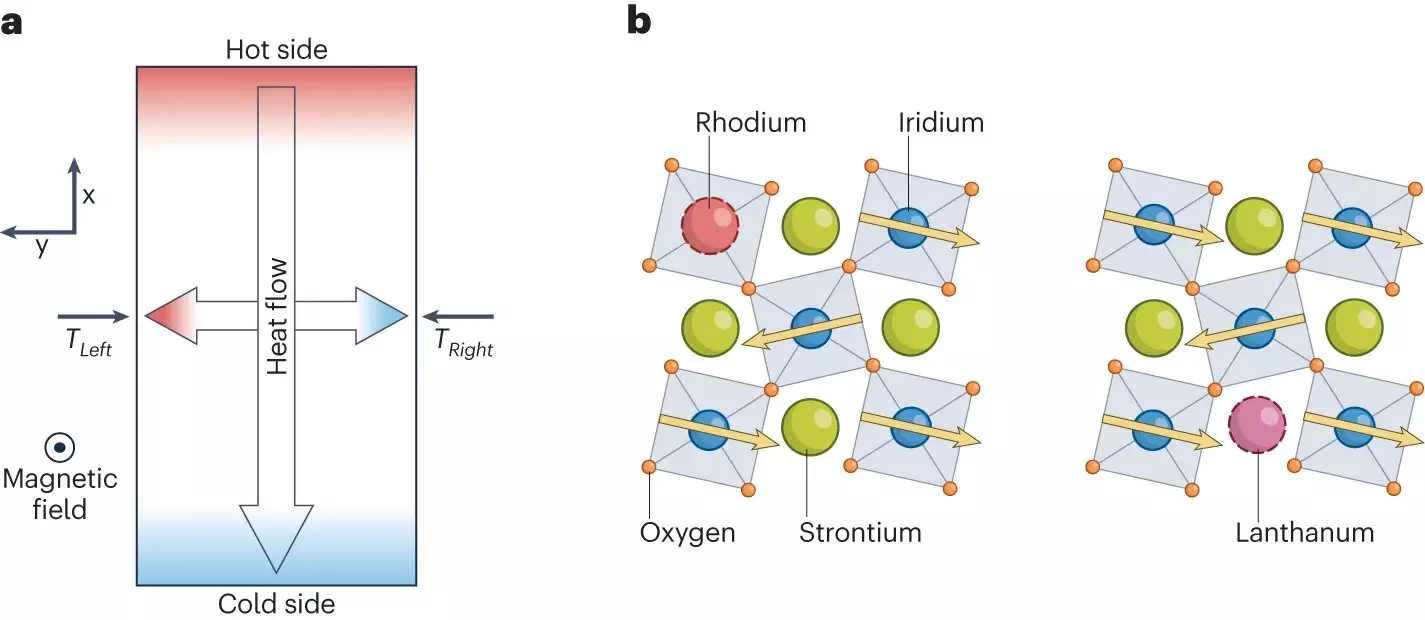The thermal hall effect (THE) is a complex physical occurrence where tiny transverse temperature differences appear in a material when a thermal current passes through it along with a perpendicular magnetic field. While this effect has been identified in several insulators, the underlying physics are not yet well understood. Researchers at Université de Sherbrooke in Canada have been delving into the mechanism behind this effect in various materials, with a recent focus on the antiferromagnetic insulator strontium iridium oxide (Sr2IrO4).
Recent research conducted by Louis Taillefer and his colleagues aimed to uncover the mystery behind the THE in insulators, starting from their surprising discovery of a substantial THE in cuprate superconductors. Their investigation led them to pinpoint phonons as the heat carriers responsible for the effect in cuprate insulators. Further experiments with materials such as strontium titanate revealed that phonons were the critical agents in driving the observed THE.
In a recent study, Taillefer’s team examined the impact of impurities on the phonon-induced THE in Sr2IrO4. By introducing rhodium (Rh) and lanthanum (La) impurities into the material, they made a remarkable discovery. The addition of a small concentration of Rh impurities led to a dramatic 70-fold increase in THE, indicating that phonon scattering off impurities within an antiferromagnetic environment played a crucial role in generating THE in Sr2IrO4.
The findings from Taillefer and his team shed light on a potential mechanism underlying the phonon-induced THE in Sr2IrO4, involving the scattering of phonons by impurities, possibly through resonant processes suggested by various theorists. Moving forward, the researchers plan to explore other materials to deepen their understanding of THE phenomenon. They aim to investigate whether materials like RuCl3 and Na2Cu2TeO6, with the potential for quantum spin liquid states, may exhibit THE driven by exotic emergent excitations like Majorana fermions or spinons.
The quest to unravel the mystery of the thermal hall effect in insulators continues to be a fascinating journey for scientists worldwide. By studying the interaction between thermal currents, magnetic fields, and a multitude of materials, researchers like Louis Taillefer and his team are slowly peeling back the layers of complexity surrounding this intriguing phenomenon. As they delve deeper into the underlying mechanisms at play, new discoveries and insights are likely to emerge, paving the way for future advancements in the field of condensed matter physics.


Leave a Reply